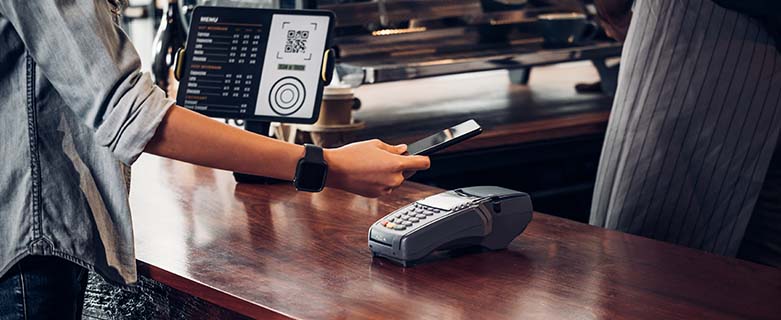
Contactless Payment Chargebacks
By Chris Alarie on Jun 30, 2022
“Change is the law of life. And those who look only to the past or present are certain to miss the future.”
― John F. Kennedy
The payments industry is a site of frequent change. Merchants are confronted with new payment methods and must evaluate the risks and benefits of adopting those methods. Among the most recent such methods are contactless payments. The two most prominent forms of contactless payments that merchants are adopting are payment methods that make use of QR codes and NFC technology. While these methods do provide some unique risks and benefits, they largely function as variations on traditional mobile and card-present (CP) transactions.
What Are NFC Payments?
NFC stands for “near-field communication”. It is a set of communication protocols similar to radio-frequency identification (RFID) that allows electronic devices to communicate with each other. Unlike RFID communications, NFCs only work at extremely close proximity—generally within an inch or two. NFC payments use this technology to allow the exchange of payment information from a NFC-enabled payment card or smartphone app such as a digital wallet to a NFC-enabled payment terminal. For NFC cards, the transaction is processed the same as any other EMV chip transaction.
What Are QR Code Payments?
QR code stands for “quick response” code. It is a form of matrix barcode that can be read by a machine such as a smartphone. QR code payments work such that a consumer scans a QR code with their smartphone and it opens a payment page or mobile payment terminal, allowing them to pay by one mobile payment method or another.
Are There NFC Chargebacks? Are There QR Code Chargebacks?
Yes. Ultimately, contactless payments eventually connect through to a traditional payment card, usually through a digital wallet, peer-to-peer (P2P) payment app, or some other similar mobile payment method. As a result, contactless payments have the same chargeback possibilities as any other CP transaction. They also face similar risks of true fraud, chargeback fraud, and friendly fraud as payments made with actual cards. Certain aspects of the technologies themselves may color those risks somewhat but they remain largely the same as transactions processed via card swipe, EMV chip, digital wallet, or mobile transactions.
What are the Fraud Risks of Contactless Payments?
Contactless payments do have some unique, technologically-based fraud risks. They are somewhat complicated to enact, however. Fraudsters could create a counterfeit QR code and affix it in place of the legitimate QR code in order to steal the payment and payment information. There are also rumors of NFC cards and digital wallets being susceptible to theft via commercially available RFID scanners. While that may be technically possible, due to the extremely close proximity required for NFC technology, it is difficult to imagine such fraud schemes being effective at any meaningful scale. Additionally, smartphone companies generally take great efforts to protect their users from these sorts of data thefts.
Indeed, contactless payments that work through digital wallets ostensibly have a lower likelihood of true fraud due to the biometric data that is often required to set up a digital wallet and validate payments. And for attempts at chargeback fraud that involve digital wallets, that biometric data can serve as useful compelling evidence should merchants choose to pursue representment.
Certain fraud risks remain relating to stolen cards or unscrupulous consumers intentionally committing chargeback fraud. But these sorts of risks exist to one extent or another for all transactions that involve payment cards, either directly or indirectly.
Conclusion
Each individual merchant must determine for themselves whether or not to adopt contactless payment technology. The benefits include the fact that contactless payments are ostensibly less vulnerable to true fraud than more traditional CP payments and the fact that consumers generally like having multiple payment options. The detriments include the upfront cost of technological upgrades and the fact that merchants generally find it more difficult to win representments for digital wallet transactions. Ultimately, industry trends and consumer preferences will determine if contactless payments are an inevitability.


